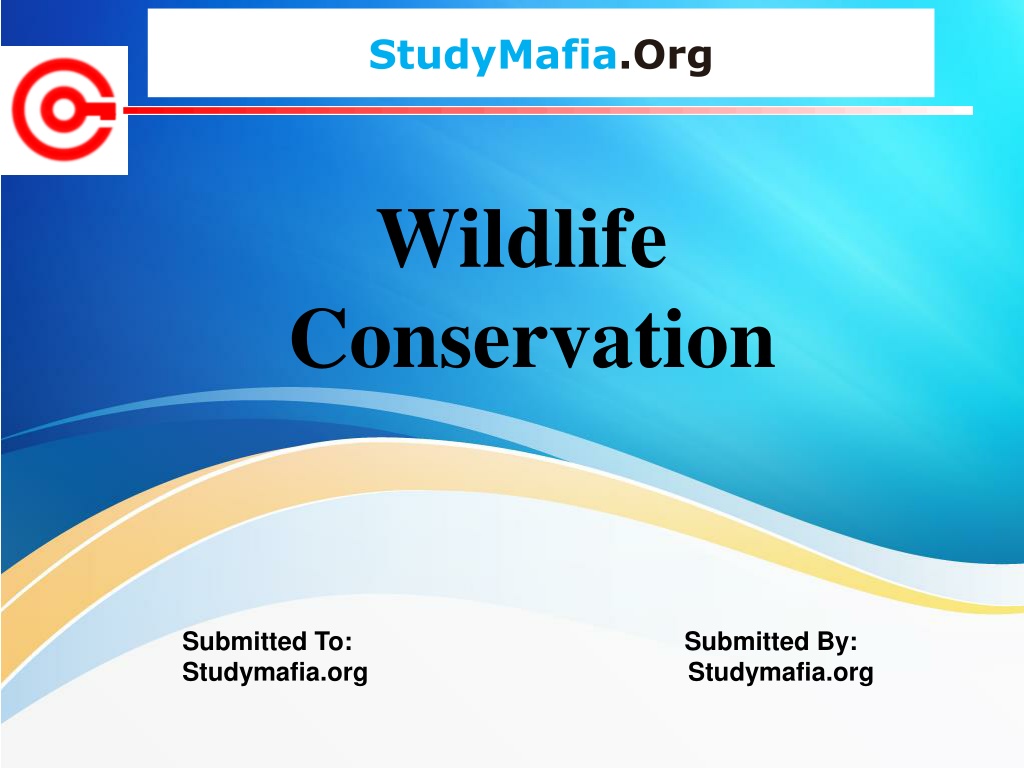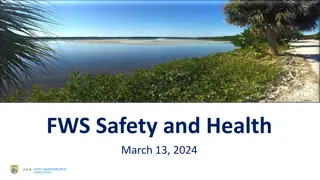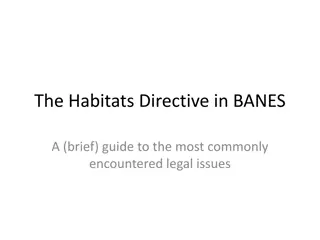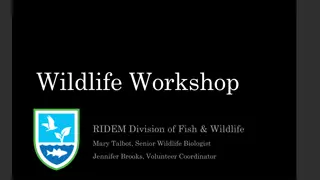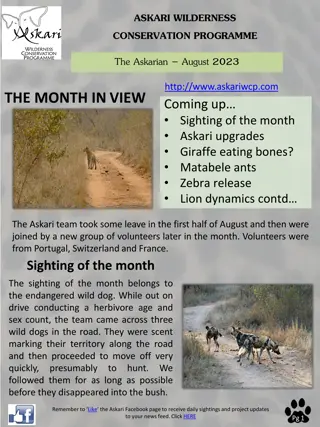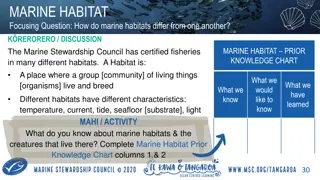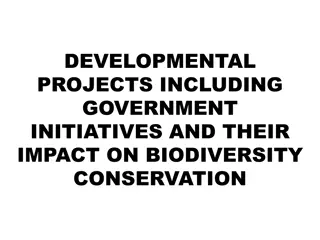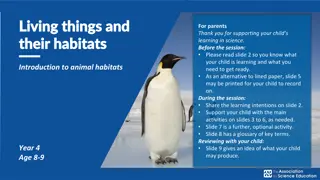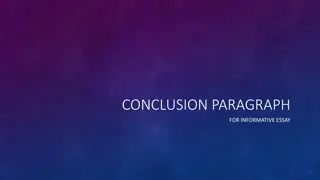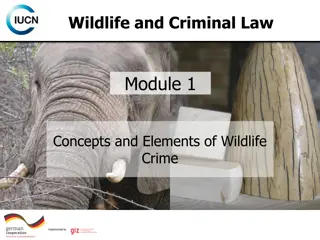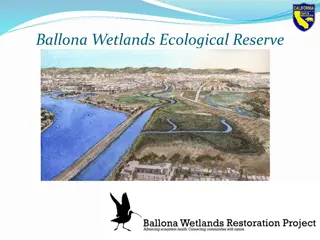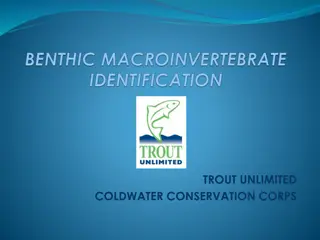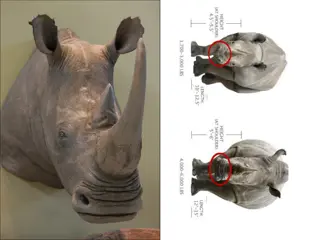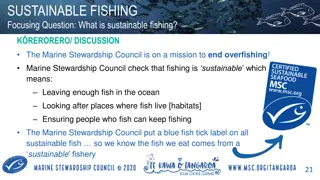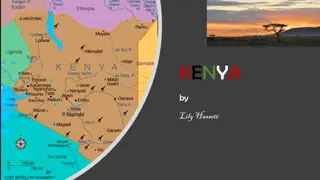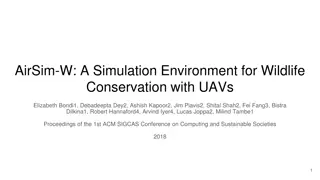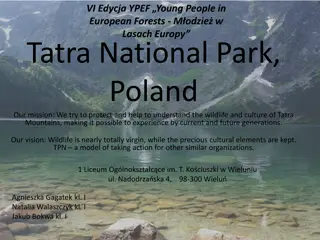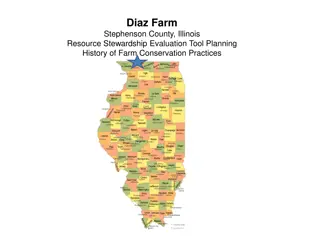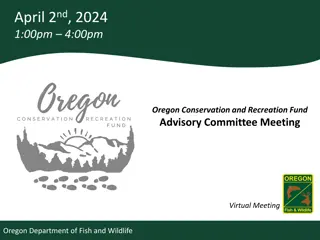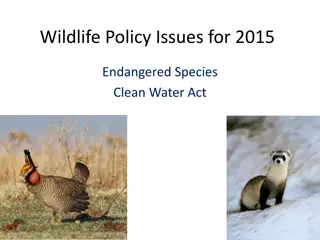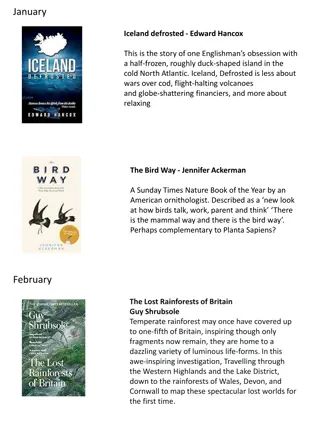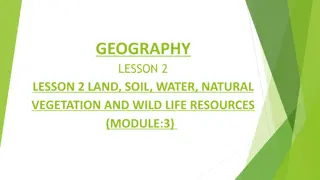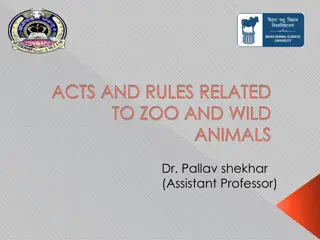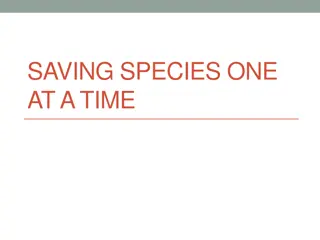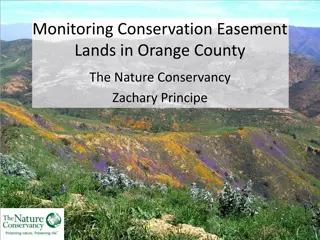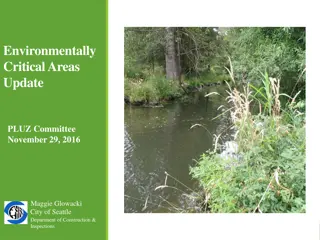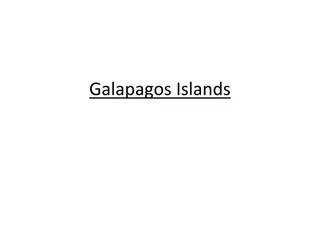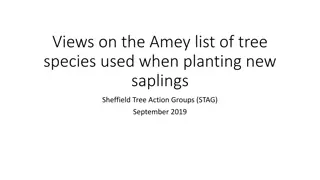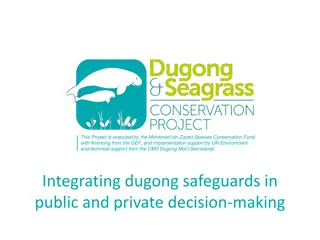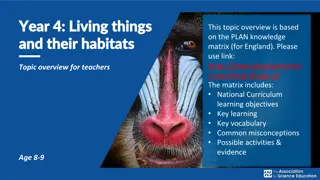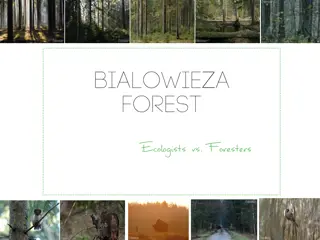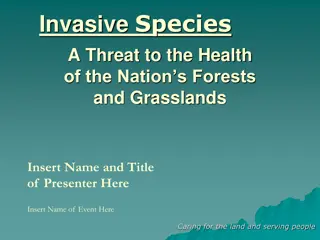Wildlife Conservation: Protecting Species and Habitats for a Sustainable Future
Wildlife conservation is essential to safeguarding the diverse species and habitats on our planet. Threats such as habitat destruction, deforestation, and overexploitation endanger wildlife populations globally. Through conservation methods and raising awareness, we can work towards restoring and protecting natural ecosystems for future generations.
Download Presentation

Please find below an Image/Link to download the presentation.
The content on the website is provided AS IS for your information and personal use only. It may not be sold, licensed, or shared on other websites without obtaining consent from the author. Download presentation by click this link. If you encounter any issues during the download, it is possible that the publisher has removed the file from their server.
E N D
Presentation Transcript
StudyMafia.Org Wildlife Conservation Submitted To: Submitted By: Studymafia.org Studymafia.org
Table Contents Definition Introduction Threats To Wildlife Purpose of Wildlife Conservation Wildlife Conservation Methods Importance of Wildlife Conservation Conclusion 2
Definition Wildlife conservation refers to the practice of protecting wild species and their habitats in order to maintain healthy wildlife species or populations and to restore, protect or enhance natural ecosystems. 3
Introduction Major threats to wildlife include habitat destruction, degradation, fragmentation, overexploitation, poaching, pollution and climate change. The IUCN estimates that 27,000 species of the ones assessed are at risk for extinction. Expanding to all existing species, a 2019 UN report on biodiversity put this estimate even higher at a million species. It is also being acknowledged that an increasing number of ecosystems on Earth containing endangered species are disappearing. 4
Threats To Wildlife Habitat destruction decreases the number of places where wildlife can live in. Habitat fragmentation breaks up a continuous tract of habitat, often dividing large wildlife populations into several smaller ones. Human-caused habitat loss and fragmentation are primary drivers of species declines and extinctions. 6
Threats To Wildlife Deforestation Deforestation is the clearing and cutting down forests on purpose.Deforestation is a cause of human-induced habitat destruction, by cutting down habitats of different species in the process of removing trees. Deforestation is often done for several reasons, often for either agricultural purposes or for logging, which is the obtainment of timber and wood for use in construction or fuel. 7
Threats To Wildlife Overexploitation Overexploitation is the harvesting of animals and plants at a rate that's faster than the species' ability to recover. While often associated with Overfishing, overexploitation can apply to many groups including mammals, birds, amphibians, reptiles, and plants. 8
Threats To Wildlife Poaching Poaching for illegal wildlife trading is a major threat to certain species, particularly endangered ones whose status makes them economically valuable. Such species include many large mammals like African elephants, tigers, and rhinoceros. [traded for their tusks, skins, and horns respectively] 9
Threats To Wildlife Culling Culling is the deliberate and selective killing of wildlife by governments for various purposes. An example of this is shark culling, in which "shark control" programs in Queensland and New South Wales (in Australia) have killed thousands of sharks, as well as turtles, dolphins, whales, and other marine life 10
Threats To Wildlife Pollution A wide range of pollutants negatively impact wildlife health. For some pollutants, simple exposure is enough to do damage (e.g. pesticides). For others, its through inhaling (e.g. air pollutants) or ingesting it (e.g. toxic metals). 11
Threats To Wildlife Climate change Humans are responsible for present-day climate change. It is related to some of the aforementioned threats to wildlife like habitat destruction and pollution. Rising temperatures, melting ice sheets, changes in precipitation patterns, severe droughts, more frequent heat waves, storm intensification, and rising sea levels are some of the effects of climate change 12
Purpose of Wildlife Conservation As the human population increases, more and more lands are brought under its control and, as a result, the amount of natural vegetation has diminished considerably and so also the habitat of various species. The vast expanses of tropical forest and its inhabiting species have become increasingly threatened in the last few decades 13
Purpose of Wildlife Conservation Even in the oceans, fishing is so intensive that populations are diminishing rapidly. We have become too efficient as predators. Sometimes we hunt species for luxury items! For example, the elephants for their tusk, the rhinoceroses for their horns etc. Sometimes we capture exotic species such as various birds, coral reef fishes etc. for the pet trade. 14
Wildlife Conservation Methods Protection of Natural Habitat: Wildlife habitats are not stable. Changes occurring in habitats is mainly due to biotic succession, retrogression or to rather sudden natural or man- caused disturbances such as by fire, logging or lagging, flooding, construction work, pollution etc. These changes alter food, cover and other habitat resources for all wildlife species. 15
Wildlife Conservation Methods Protection Through Legislation: Various countries of the world have formed various laws to forbid killing of wildlife. In India, the legislative measures adopted for the protection of wildlife are: (a) Directive Principles of State Policy (b) Inclusion of forests and wildlife in concurrent list (c) Acts to Protect Wildlife (d)Indian Wildlife (Protection) Act, 1972 (as amended in 1983, 1986, 1991, etc.) 16
Wildlife Conservation Methods Mass Education: Conservation education and awareness have to be achieved both at the formal and non-formal level. Most people of an country are ignorant about the utility of wildlife. At the formal level schools, colleges and universities should include in the curriculum, the study of ecology, wildlife and conservation. However, this remains largely text book and examination oriented. 17
Wildlife Conservation Methods Maintenance of Viable Species in Protected Areas: A particular species of animal which is rare is given importance for conservation in a protected area. For example, Gir Forest at Gujarat conserves lions, Kaziranga (Assam), Jaldapara (W. Bengal) conserve one-horned rhinoceros etc. 18
Wildlife Conservation Methods To Declare Some Animals, Trees, Flowers as National and State Symbol: A list of some animals and plants have been prepared with the help of Botanical Survey of India (BSI), Zoological Survey of India (ZSI), National Bureau of Plant Genetic Resources (NBPGR) and NBRI allotting 4 species to each of the 27 states/and to India 19
Importance of Wildlife Conservation As part of the world's ecosystems, wildlife provides balance and stability to nature's processes. The goal of wildlife conservation is to ensure the survival of these species, and to educate people on living sustainably with other species. 20
Conclusion Wildlife conservation is essential to maintain the balance of the ecosystem. It is necessary to protect the rare and extinct species of animals. 22
Thanks To StudyMafia.org
